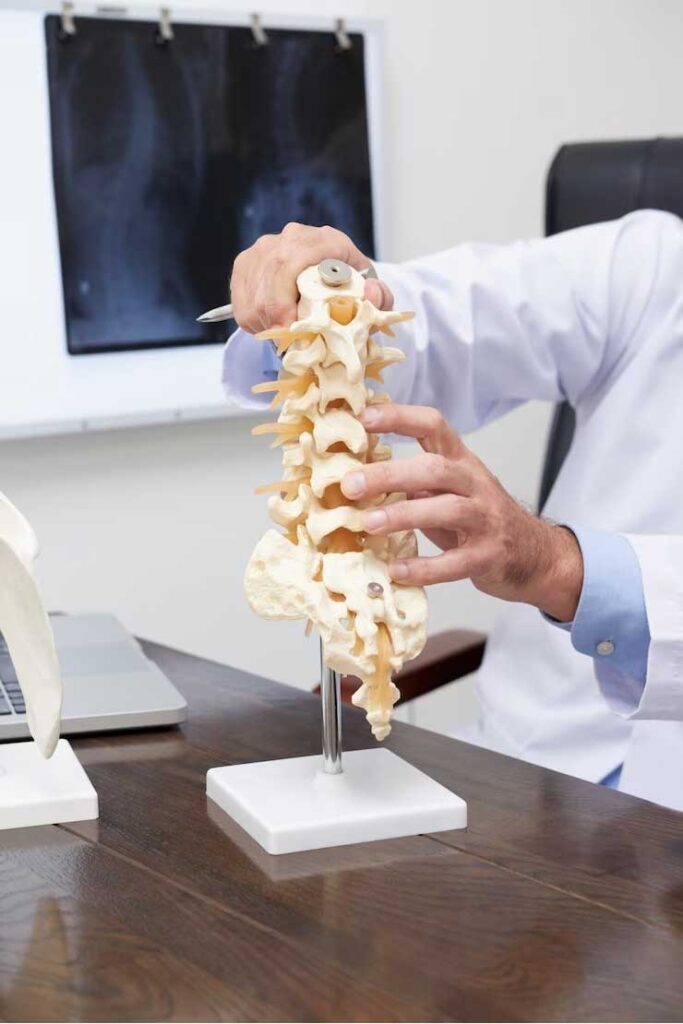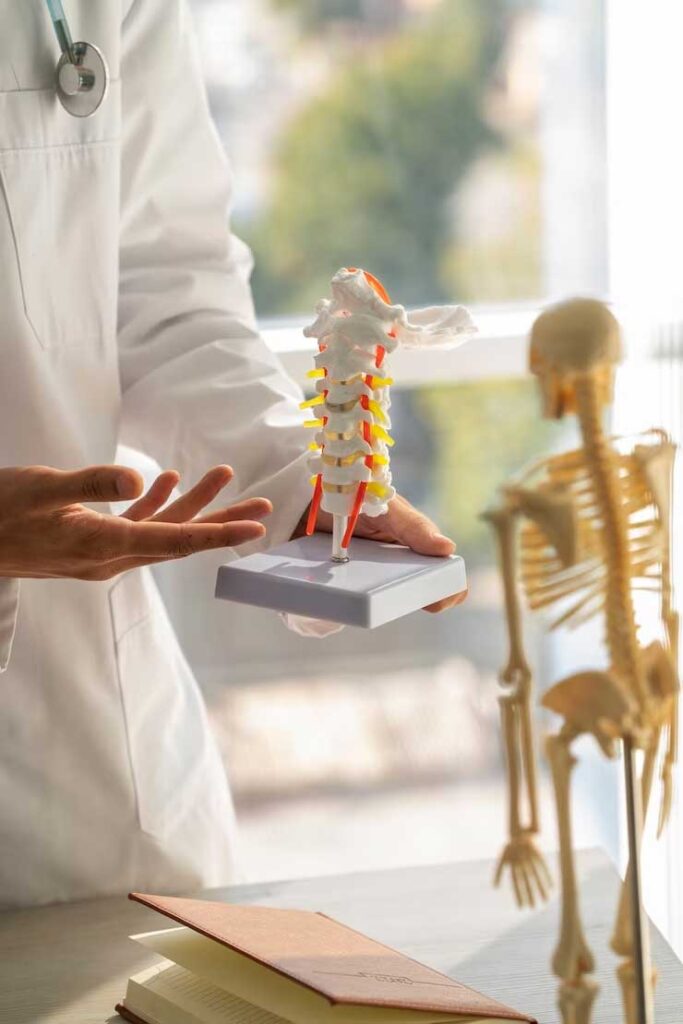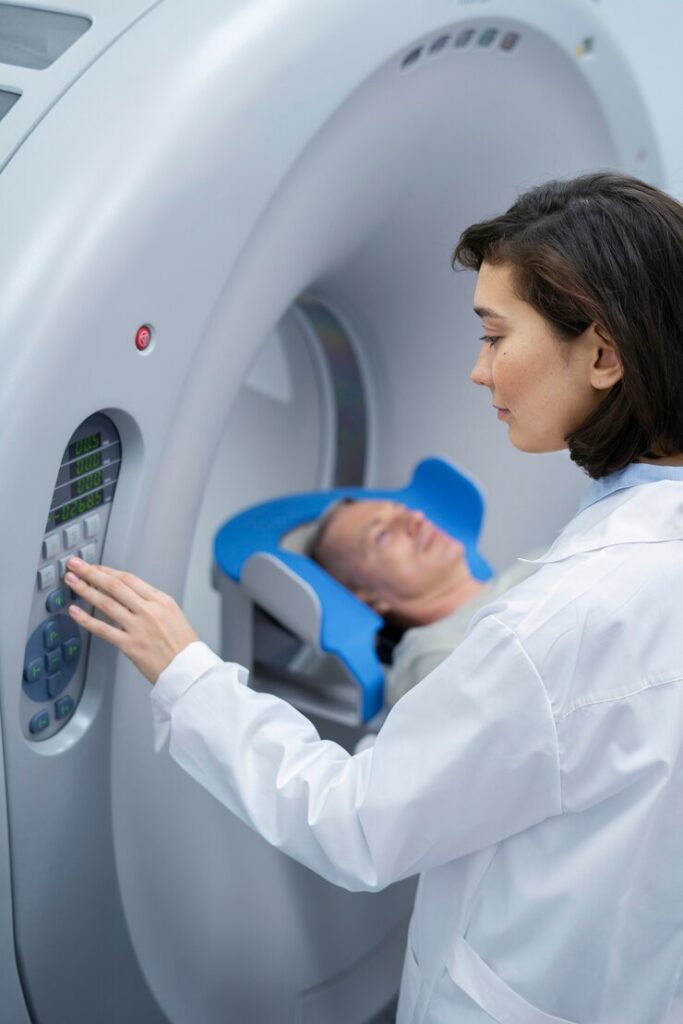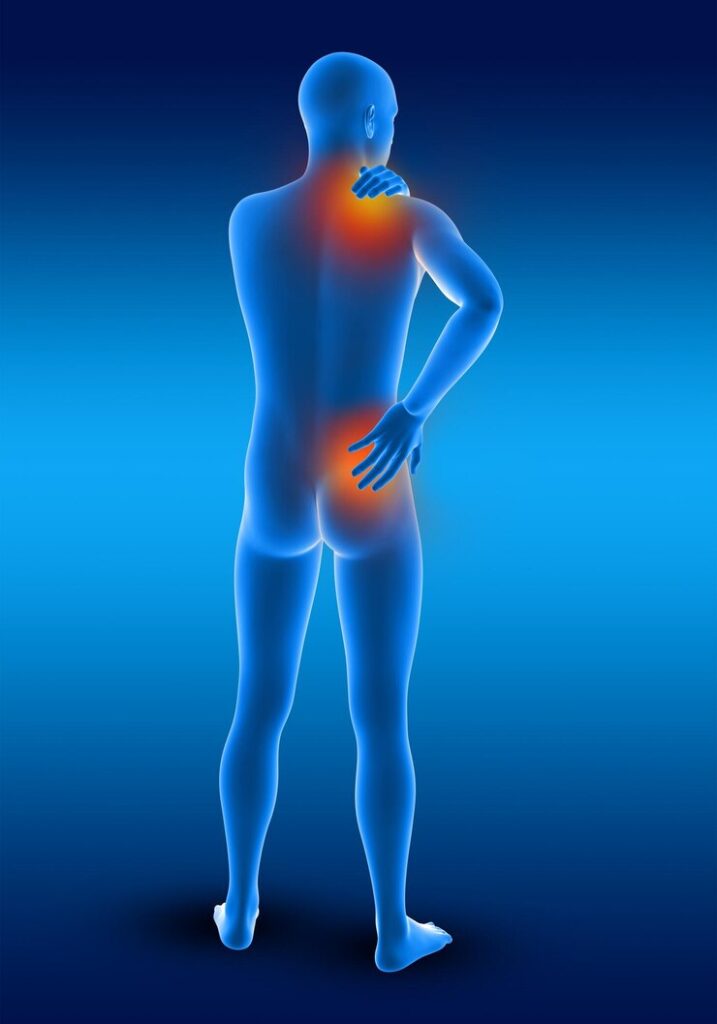Health tips
Home > Health tips
Healthy Bones – Healthy Life
Maintaining good bone health is crucial for overall well-being, as our bones provide structure, support, and protection to our body. Here are some health tips to promote strong and healthy bones
1. Calcium-Rich Diet
Ensure your diet includes an adequate amount of calcium, which is crucial for building and maintaining strong bones. Good sources of calcium include dairy products, leafy green vegetables, tofu, and fortified foods.
2. Vitamin D Exposure
Get regular exposure to sunlight to stimulate the production of vitamin D in your skin. Vitamin D is essential for the absorption of calcium in the body. Alternatively, include foods rich in vitamin D, such as fatty fish (salmon, mackerel), egg yolks, and fortified foods.
3. Regular Physical Activity
Engage in weight-bearing exercises such as walking, running, hiking, or dancing. These activities help to strengthen bones and improve bone density. Additionally, incorporate muscle-strengthening exercises like weightlifting for overall bone health.
4. Balanced Diet
Ensure a well-balanced diet that includes an adequate intake of protein, vitamins (especially C and K), and minerals (such as magnesium and phosphorus), all of which contribute to bone health.
5. Limit Caffeine and Soda
High caffeine and soda consumption may interfere with calcium absorption. Moderation is key; consider reducing your intake and opting for water, herbal teas, or calcium-fortified beverages.


6. Quit Smoking
Smoking has been linked to a decrease in bone density and an increased risk of fractures. Quitting smoking contributes not only to bone health but also overall well-being.
7. Moderate Alcohol Consumption
Excessive alcohol consumption can negatively impact bone health. If you choose to drink alcohol, do so in moderation, as excessive intake may hinder the body's ability to absorb calcium.
8. Maintain a Healthy Body Weight
Engage in weight-bearing exercises such as walking, running, hiking, or dancing. These activities help to strengthen bones and improve bone density. Additionally, incorporate muscle-strengthening exercises like weightlifting for overall bone health.
9. Bone-Friendly Nutrients
Consume foods rich in bone-friendly nutrients, such as phosphorus found in dairy, meat, and nuts; magnesium present in green leafy vegetables, nuts, and seeds; and vitamin K available in broccoli, kale, and other green vegetables.
10. Regular Check-ups
Periodic check-ups with your healthcare provider can help monitor your bone health. Discuss any concerns or risk factors, and consider bone density testing if recommended.
Vitamin D3: A Key Player in Overall Health
Vitamin D3, often referred to as the “sunshine vitamin,” plays a crucial role in maintaining optimal health. While it is well-known for its role in supporting bone health, emerging research highlights its involvement in various bodily functions, making it a vital nutrient for overall well-being.
The Sun Connection:
The primary natural source of vitamin D3 is sunlight. When our skin is exposed to sunlight, it synthesizes vitamin D3, which is then converted into its active form in the liver and kidneys. However, factors such as geographical location, season, and skin pigmentation can influence the amount of vitamin D3 produced. In regions with limited sunlight, obtaining sufficient vitamin D3 from dietary sources becomes essential.
Bone Health:
One of the most well-established roles of vitamin D3 is its contribution to bone health. It facilitates the absorption of calcium and phosphorus in the intestines, critical for the formation and maintenance of strong and healthy bones. A deficiency in vitamin D3 can lead to weakened bones, increasing the risk of conditions like osteoporosis and fractures.
Immune System Support:
Recent research has unveiled the immune-modulating properties of vitamin D3. Adequate levels of vitamin D3 are associated with a balanced immune response, helping the body defend against infections and reducing the risk of autoimmune disorders. Some studies suggest that maintaining optimal vitamin D3 levels may contribute to a lower incidence of respiratory infections.
Mood and Mental Health:
Vitamin D3 receptors are found in various parts of the brain, indicating its potential role in mood regulation and mental health. Research suggests a link between vitamin D3 deficiency and an increased risk of mood disorders, such as depression and seasonal affective disorder (SAD). While more studies are needed, preliminary evidence supports the idea that maintaining sufficient vitamin D3 levels may positively influence mental well-being.


Cardiovascular Health:
Vitamin D3 may also play a role in cardiovascular health. Some studies suggest that it contributes to the regulation of blood pressure and the reduction of inflammation, which are important factors in maintaining a healthy heart. However, more research is needed to fully understand the extent of vitamin D3's impact on cardiovascular function.
Sources of Vitamin D3:
Apart from sunlight, vitamin D3 can be obtained from various dietary sources, including fatty fish (such as salmon and mackerel), egg yolks, fortified dairy products, and certain fortified foods. For those at risk of deficiency, vitamin D3 supplements may be recommended under the guidance of a healthcare professional.
Conclusion:
Vitamin D3 is a multifaceted nutrient that extends beyond its well-known role in bone health. From supporting the immune system to potentially influencing mood and cardiovascular health, maintaining optimal vitamin D3 levels is crucial for overall well-being. As with any nutrient, achieving the right balance is key, and individuals should consult with healthcare professionals to determine their specific needs and ensure they are reaping the full benefits of this essential vitamin
Calcium
Calcium is a vital mineral that plays a fundamental role in supporting overall health. While it is commonly associated with bone health, its benefits extend far beyond the skeletal system. Understanding the importance of calcium and incorporating it into our daily lives is essential for maintaining a healthy and robust body.
Bone Strength:
One of the most well-known roles of calcium is its contribution to bone health. About 99% of the body's calcium is stored in the bones and teeth, providing structural support and strength. Adequate calcium intake is crucial during periods of bone growth, such as childhood, adolescence, and pregnancy, to ensure optimal bone density and reduce the risk of osteoporosis later in life.
Teeth and Oral Health:
In addition to fortifying bones, calcium is essential for maintaining strong teeth. It plays a key role in the mineralization of tooth enamel, the protective outer layer of the teeth. Sufficient calcium intake is associated with a lower risk of dental issues, such as cavities and periodontal disease, promoting overall oral health.
Muscle Function:
Calcium is involved in muscle contraction and relaxation, making it indispensable for proper muscle function. When nerve cells stimulate muscle cells, calcium is released, allowing the muscles to contract. Insufficient calcium levels can lead to muscle cramps and compromised muscle performance.
Blood Clotting:
Calcium is a critical component in the blood clotting process. When a blood vessel is injured, platelets adhere to the site, and calcium helps in the formation of a blood clot to prevent excessive bleeding. Maintaining an adequate level of calcium is essential for proper clotting and wound healing.


Nerve Transmission:
Calcium ions play a crucial role in transmitting signals along nerve cells. This is essential for various bodily functions, including the communication between the brain and other parts of the body. Proper nerve transmission is vital for coordination, reflexes, and overall neurological health.
Recommended Daily Intake:
The recommended daily intake of calcium varies based on age, gender, and life stage. Generally, adults are advised to aim for 1000-1300 mg of calcium per day, with higher amounts recommended for adolescents, pregnant or lactating women, and individuals over the age of 50.
Sources of Calcium:
A diverse diet can provide ample calcium from various sources. Dairy products such as milk, cheese, and yogurt are rich in calcium. Additionally, leafy green vegetables, fortified plant-based milk alternatives, nuts, and seeds contribute to calcium intake.
Conclusion:
Incorporating sufficient calcium into our diets is a key component of a well-rounded approach to health. From fortifying bones and teeth to supporting muscle function and nerve transmission, calcium is a versatile mineral that contributes to overall well-being. Making conscious choices to include calcium-rich foods ensures that our bodies receive the support they need for a healthy and active life.
Vitamin B12: A Vital Nutrient for Health and Well-Being
Vitamin B12, also known as cobalamin, is a water-soluble vitamin that plays a crucial role in various bodily functions. It is essential for maintaining nerve tissue health, supporting the production of DNA and red blood cells, and contributing to overall energy metabolism. Here are key aspects of vitamin B12
1. Cellular Energy Production
Vitamin B12 is involved in the conversion of food into energy. It plays a key role in the metabolism of fats and carbohydrates, providing the necessary energy for the body's cells to function optimally.
2. Red Blood Cell Formation
B12 is essential for the synthesis of red blood cells in the bone marrow. These cells are crucial for transporting oxygen to tissues and organs throughout the body. A deficiency in vitamin B12 can lead to anemia and fatigue.
3. Nervous System Health
Vitamin B12 is vital for the maintenance of the nervous system. It helps in the production of myelin, a protective sheath around nerve fibers that facilitates proper nerve impulse transmission. Deficiencies in B12 can lead to neurological issues such as numbness, tingling, and difficulty with coordination.
4. DNA Synthesis
B12 is necessary for the synthesis of DNA, the genetic material in all cells. Adequate levels of B12 are crucial for normal cell division and the maintenance of healthy tissues.
5. Cognitive Function
Some studies suggest that vitamin B12 may play a role in cognitive function and may be linked to a reduced risk of neurodegenerative disorders, such as dementia. However, more research is needed to establish a definitive connection.


6. Food Sources
Vitamin B12 is primarily found in animal products, including meat, fish, poultry, eggs, and dairy. Fortified foods, such as cereals and plant-based milk alternatives, are also good sources for individuals following vegetarian or vegan diets.
7. Absorption and Digestive Health
Absorption of vitamin B12 occurs in the small intestine and requires the presence of intrinsic factor, a substance produced in the stomach. Conditions that affect the stomach lining or the production of intrinsic factor, such as pernicious anemia or certain gastrointestinal disorders, can impact B12 absorption.
8. Deficiency and Health Implications
Vitamin B12 deficiency can lead to various health issues, including anemia, neurological problems, and fatigue. Individuals at risk of deficiency include older adults, those with certain gastrointestinal conditions, and strict vegetarians or vegans.
9. Supplementation
In cases where dietary intake or absorption is insufficient, vitamin B12 supplements or injections may be recommended under the guidance of a healthcare professional. Regular monitoring of B12 levels is important to ensure proper supplementation.
Ensuring an adequate intake of vitamin B12 through a balanced diet or supplementation is essential for overall health. If there are concerns about B12 levels or symptoms of deficiency, consulting with a healthcare provider is advisable for proper assessment and guidance.
Osteoporosis: Understanding the Silent Threat to Bone Health
Osteoporosis is a common but often overlooked bone condition characterized by weakened bones, making them more susceptible to fractures. It is often referred to as the “silent disease” because it progresses without noticeable symptoms until a fracture occurs. Understanding osteoporosis, its risk factors, and preventative measures is crucial for maintaining optimal bone health.
1. Bone Remodeling and Osteoporosis
Bones are dynamic tissues constantly undergoing a process called remodeling, where old bone is removed and new bone is formed. In osteoporosis, this balance is disrupted, leading to a decrease in bone density and strength.
2. Risk Factors
Certain factors increase the risk of developing osteoporosis. These include aging, hormonal changes (particularly in postmenopausal women), family history, low body weight, sedentary lifestyle, smoking, excessive alcohol consumption, and a diet low in calcium and vitamin D.
3. Decreased Bone Density
Osteoporosis results in a significant reduction in bone density and mass. This makes bones porous and fragile, increasing the likelihood of fractures, especially in areas such as the spine, hip, and wrists.
4. Fracture Risk
The compromised strength of bones in individuals with osteoporosis elevates the risk of fractures from minor falls or even everyday activities. Hip fractures, in particular, can have severe consequences for mobility and independence, especially in older adults.
5. Silent Progression
Osteoporosis is often asymptomatic until a fracture occurs. This makes early detection through bone density testing crucial, especially for individuals at higher risk due to age or other contributing factors.


6. Diagnostic Tests
Dual-energy X-ray absorptiometry (DXA) is the most common test used to measure bone density and assess the risk of fractures. Early detection allows for timely intervention and management to prevent further bone loss.
7. Prevention and Management:
Adequate calcium and vitamin D intake, along with regular weight-bearing exercises, are essential for maintaining bone health. Lifestyle modifications such as quitting smoking and limiting alcohol consumption contribute to overall well-being and reduce the risk of osteoporosis.
8. Medications:
In some cases, healthcare providers may prescribe medications to slow bone loss or stimulate bone formation. These medications are often recommended for individuals with significant risk factors or those who have already experienced fractures.
9. Importance of Diet and Exercise
A balanced diet rich in calcium and vitamin D is crucial for bone health. Weight-bearing exercises, such as walking, jogging, and resistance training, help maintain bone density and strength.
10. Regular Check-ups
Regular check-ups and bone density screenings are essential, especially for postmenopausal women and older adults. Early intervention can significantly impact the progression of osteoporosis and reduce the risk of fractures.
Osteoporosis is a preventable and manageable condition with the right lifestyle choices, early detection, and medical intervention. Understanding personal risk factors and adopting a proactive approach to bone health can go a long way in preventing the potentially debilitating effects of osteoporosis. If there are concerns about bone health, it's crucial to consult with a healthcare professional for personalized advice and appropriate management strategies.
Good Posture for a Healthy Body and Mind
Posture refers to the alignment and positioning of your body parts while sitting, standing, or moving. Good posture is essential for overall well-being, as it contributes to physical health, comfort, and even mental confidence. Here’s why maintaining good posture is crucial and some tips for achieving it
1. Physical Health Benefits
Good posture helps distribute the force of gravity more evenly through your body, reducing strain on muscles and joints. Proper alignment supports the spine's natural curves, preventing undue stress on the vertebrae and minimizing the risk of musculoskeletal issues.
2. Prevention of Musculoskeletal Problems
Poor posture can lead to a variety of musculoskeletal problems, including back pain, neck pain, and headaches. Maintaining a neutral spine and proper alignment reduces the risk of developing chronic conditions related to poor posture.
3. Enhanced Breathing and Circulation
Proper posture allows for optimal lung expansion and breathing capacity. When you slouch or hunch over, it can restrict your lung capacity, leading to shallow breathing. Additionally, good posture supports healthy blood circulation, ensuring that oxygen and nutrients are efficiently transported throughout the body.
4. Improved Digestion
Sitting or standing with proper posture aids in maintaining proper organ alignment, contributing to better digestion. Slouching or slumping can compress organs and interfere with their normal functions.
5. Enhanced Confidence and Mood
Your body posture can influence your mental and emotional well-being. Standing or sitting with an upright and open posture can enhance feelings of confidence and positivity. Conversely, poor posture may convey a lack of confidence and affect your mood.


Tips for Maintaining Good Posture:
1. Sit Ergonomically
When sitting for extended periods, use a chair that supports the natural curve of your spine. Keep your feet flat on the ground, and ensure that your knees are at a 90-degree angle.
2. Stand Tall
Stand with your feet hip-width apart, shoulders back, and your weight evenly distributed on both feet. Avoid locking your knees, and let your arms hang naturally at your sides.
3. Support Your Back
Use lumbar support when sitting for long periods, especially in office chairs. This helps maintain the natural curve of your lower back.
4. Be Mindful of Devices
Adjust the height of your computer monitor or screen to eye level to prevent straining your neck. Hold smartphones and tablets at eye level to avoid looking down for extended periods.
5. Take Breaks
Whether sitting or standing, take breaks to stretch and change positions every 30 minutes. This helps prevent stiffness and muscle fatigue.
6. Exercise Regularly
Engage in activities that strengthen core muscles and improve flexibility. A strong core provides better support for your spine.
7. Be Conscious of Your Posture
Pay attention to your posture throughout the day. Regularly check in with yourself to ensure that you are maintaining proper alignment.
Remember that developing and maintaining good posture is a gradual process that involves both awareness and practice. Making conscious efforts to improve your posture can have lasting positive effects on your physical health and overall well-being. If you experience persistent pain or discomfort, consider consulting with a healthcare professional or a posture specialist for personalized advice.

Understanding Magnetic Resonance Imaging (MRI): A Window into the Body's Interior
Magnetic Resonance Imaging (MRI) is a sophisticated medical imaging technique that provides detailed and comprehensive images of the internal structures of the body without using ionizing radiation. It has become an invaluable tool in the field of medicine, offering insights into various conditions and aiding in diagnosis and treatment planning.
How MRI Works :
MRI uses a powerful magnetic field and radiofrequency waves to create detailed cross-sectional images of the body's internal structures. The magnetic field causes certain atomic nuclei, particularly hydrogen nuclei, to align in a specific direction. When radiofrequency waves are applied, these nuclei absorb the energy and emit it back as signals. These signals are then processed by a computer to generate detailed images.
How MRI Works :
1. Soft Tissue Imaging
MRI excels at visualizing soft tissues, including the brain, spinal cord, muscles, ligaments, tendons, and organs such as the liver, kidneys, and reproductive organs. It provides superior contrast between different types of soft tissues.
2. Brain and Neurological Imaging
MRI is widely used to examine the brain and nervous system. It helps in detecting abnormalities such as tumors, inflammation, and vascular disorders. Functional MRI (fMRI) can also be used to study brain activity.
3. Orthopedic Imaging
Sitting or standing with proper posture aids in maintaining proper organ alignment, contributing to better digestion. Slouching or slumping can compress organs and interfere with their normal functions.


4. Cardiac Imaging
Cardiac MRI provides detailed images of the heart and blood vessels. It is used to assess heart function, detect abnormalities in the heart muscles, and evaluate blood flow.
5. Abdominal and Pelvic Imaging
MRI is employed to assess the organs in the abdomen and pelvis, including the liver, pancreas, kidneys, and reproductive organs. It helps in diagnosing conditions such as tumors, cysts, and inflammatory diseases.
6. Breast Imaging
Breast MRI is used as a supplemental imaging tool to evaluate breast abnormalities detected through mammography or ultrasound. It is particularly useful in assessing breast cancer and detecting lesions in dense breast tissue.
7. Vascular Imaging
MR angiography provides detailed images of blood vessels without the need for invasive procedures. It is commonly used to assess the blood vessels in the brain, neck, and extremities.
Patient Experience:
Non-Invasive and Painless:
MRI is a non-invasive procedure and is generally painless. Patients may hear loud knocking or tapping sounds during the scan, and ear protection is usually provided.
Lie Still:
It is crucial for patients to remain still during the MRI to ensure clear and accurate images. The procedure can take anywhere from 15 minutes to over an hour, depending on the area being imaged.
Contrast Agents:
In some cases, a contrast agent may be used to enhance the visibility of certain tissues or blood vessels. This is usually administered through an injection.
Claustrophobia:
Some individuals may experience claustrophobia inside the MRI machine. Open-bore or wide-bore MRI machines are available to help alleviate this concern.
Conclusion:
MRI is a powerful diagnostic tool that has revolutionized medical imaging. Its ability to provide detailed images of soft tissues and internal structures makes it an invaluable asset in diagnosing and monitoring a wide range of medical conditions. Advances in technology continue to enhance the capabilities of MRI, contributing to improved patient care and outcomes. If an MRI is recommended, discussing any concerns or questions with the healthcare team is encouraged to ensure a comfortable and informative experience.

Understanding Sciatica: Navigating the Painful Path of Nerve Compression
Sciatica is a condition characterized by pain radiating along the path of the sciatic nerve, which branches from your lower back through your hips, buttocks, and down each leg. This condition can be both uncomfortable and debilitating, impacting daily activities. Let’s delve into the causes, symptoms, and potential treatments for sciatica.
Causes:
1. Herniated Disc
One of the most common causes of sciatica is a herniated or slipped disc. When the soft inner material of a disc leaks out and irritates or compresses the adjacent nerve roots, it can lead to sciatic nerve pain.
2. Spinal Stenosis
Narrowing of the spinal canal, known as spinal stenosis, can put pressure on the sciatic nerve. This narrowing is often associated with the aging process and conditions like osteoarthritis.
3. Piriformis Syndrome
The piriformis muscle, located in the buttocks, can sometimes irritate or compress the sciatic nerve, leading to pain. This is known as piriformis syndrome.
4. Spondylolisthesis
This occurs when one vertebra slips forward over another, causing pressure on the sciatic nerve.
5. Trauma or Injury
Injuries to the spine or buttocks can result in inflammation or compression of the sciatic nerve, leading to pain.


Symptoms:
1. Pain
The hallmark symptom of sciatica is pain that radiates from the lower back down the buttock and the back of one leg. The pain can vary from a mild ache to a sharp, shooting sensation.
2. Numbness and Tingling
Some individuals may experience numbness or tingling along the path of the sciatic nerve, often extending into the foot.
3. Muscle Weakness
Sciatica can lead to weakness in the affected leg, making it challenging to move or bear weight.
4. Aggravated by Movement
Certain activities, such as prolonged sitting, standing, or coughing, may exacerbate sciatic pain.
Treatment Options:
1. Pain Medications
Over-the-counter pain relievers or prescription medications may help alleviate pain and reduce inflammation.
2. Physical Therapy
Specific exercises and stretches can improve flexibility, strengthen muscles, and alleviate pressure on the sciatic nerve.
3. Heat and Cold Therapy
Applying heat or cold packs to the affected area may help reduce inflammation and provide relief.
4. Epidural Steroid Injections
In more severe cases, corticosteroid injections into the spinal area can help reduce inflammation and relieve pain.
5. Surgery
In cases where conservative treatments fail to provide relief, surgery may be considered to address the underlying cause, such as a herniated disc or spinal stenosis.


Self-Care Strategies:
1. Maintain Good Posture
Practice good posture to reduce stress on the lower back.
2. Exercise Regularly
Engage in exercises that strengthen the core muscles to provide support to the spine.
3. Use Proper Body Mechanics
Lift objects using your legs rather than your back to prevent injury.
4. Avoid Prolonged Sitting
Take breaks, stand, and stretch regularly, especially if you have a desk job.
When to Seek Medical Attention:
If you experience persistent or severe sciatic pain, or if you notice muscle weakness or bladder or bowel changes, it's crucial to seek prompt medical attention. These symptoms may indicate a more serious underlying condition that requires medical intervention.
Managing sciatica often involves a combination of medical treatment, lifestyle adjustments, and rehabilitative exercises. A healthcare professional can provide a personalized treatment plan based on the specific cause and severity of your sciatic nerve pain.



